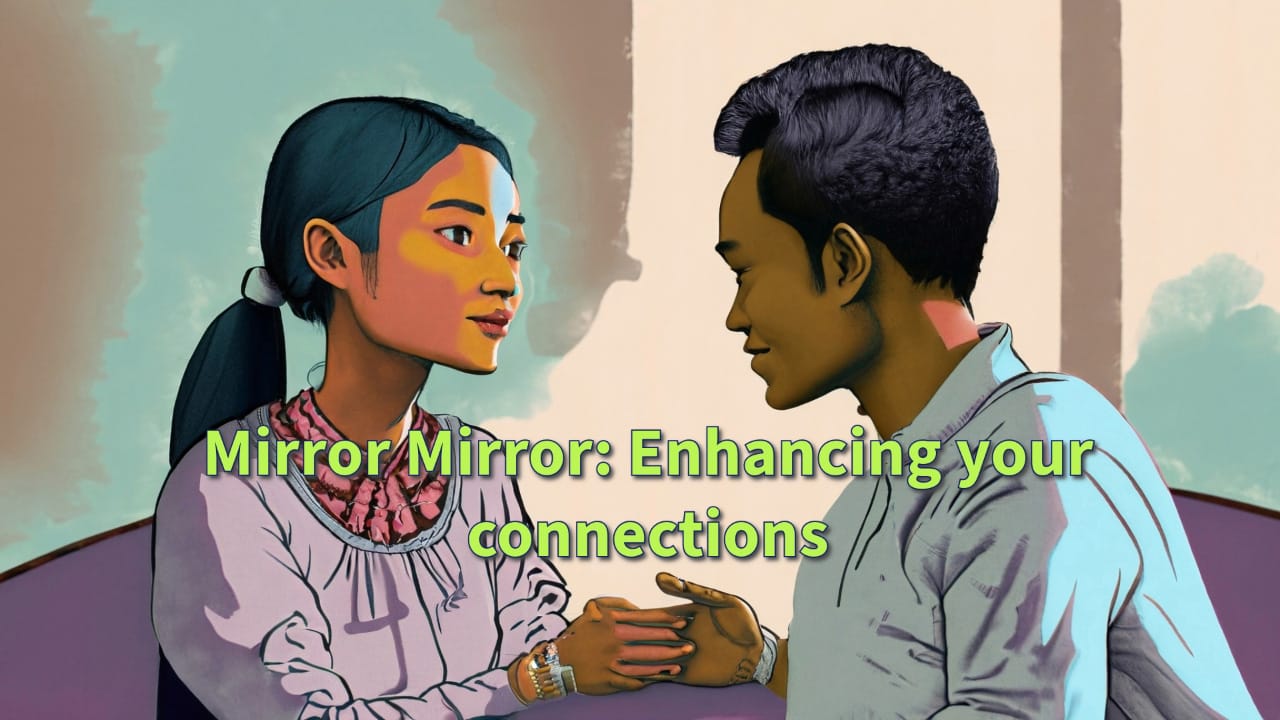Mirror, Mirror: Enhancing Your Connections
Explore the subtle art of mirroring – Learn how to authentically connect with others. #Mirroring #Connection

Recently, I have been reading a lot about building better connections. When I think of it, some of my friends are pretty good at it. They are able to build connections with almost anyone very quickly. I enjoy talking to them even when I know that sometimes they don’t understand the technical details of what I am describing. When I read a few things on this topic, I could notice these elements that help them connect with others so easily. One of them in particular, is quite easy to learn. It is called ‘Mirroring’. It is described in many books including ‘Never Split the Difference’, ‘Crucial Conversations’, and ‘How to Talk to Anyone’. Let’s see what it is and why it works so well.
What is mirroring?
Mirroring is a simple yet powerful technique used to build rapport and connection with others. It involves subtly imitating the body language, speech patterns, and behaviors of the person you're interacting with. Essentially, you're reflecting back their mannerisms, gestures, and even their choice of words.
Why it works so well?
Mirroring works so well because it taps into a fundamental aspect of human psychology: people like people who are similar to themselves. When you mirror someone, they subconsciously perceive you as being like them, which creates a sense of familiarity and trust. It's like finding a reflection of themselves in you, which naturally draws them closer to you.
Think about it this way: Have you ever had a conversation with someone who seemed to understand you perfectly, almost as if they were reading your mind? That feeling of being truly understood and connected is what mirroring aims to achieve.
How to use it?
Observe and mimic body language: Pay attention to the other person's body language - their posture, gestures, facial expressions. Then, subtly mirror these movements. For example, if they lean forward, you can lean forward too. If they nod while speaking, you can nod in agreement as well.
Match their tone and pace: Listen to the tone and pace of the other person's speech. Are they speaking quickly and enthusiastically, or are they more relaxed and slow-paced? Try to match their tone and pace to create a sense of harmony in the conversation.
Reflect their emotions: Take note of the other person's emotional state. Are they excited, calm, or perhaps a bit anxious? Reflect their emotions by showing similar feelings. If they're excited about a recent achievement, share in their excitement. If they're feeling stressed, acknowledge their feelings and offer support.
Use verbal mirroring: Repeat or echo the last few words or phrases the other person said. This shows that you're actively listening and engaged in the conversation. It also encourages them to continue talking and provides validation for their thoughts and feelings.
Remember, mirroring should be done subtly and naturally. You don't want to come across as imitating or mocking the other person. Instead, think of it as a way to build rapport and create a connection on a deeper level.
Ever since I read about it, I have started noticing many of my friends doing it. It has always made me feel more connected to them. I have also started doing it with limited success. I never knew that building deeper connections could be so easy.
My favorites
Video: Change Your Life by Journaling (Ali)
Quote: “If you let your learning lead to knowledge, you become a fool. If you let your learning lead to action, you become wealthy.” – Jim Rohn
